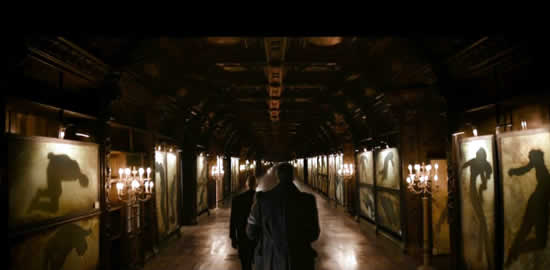 Tom Van Avermaet’s Death of a Shadow, starring Rust and Bone’s male lead Matthias Schoenaerts, has been nominated for an Academy Award for Best Live Action Short Film.
Tom Van Avermaet’s Death of a Shadow, starring Rust and Bone’s male lead Matthias Schoenaerts, has been nominated for an Academy Award for Best Live Action Short Film.
Following his critically acclaimed performances in Michaël R. Roskam’s Oscar-nominated Bullhead and Jacques Audiard’s Rust and Bone, Death of a Shadow sees Matthias Schoenaerts starring as Nathan Rijckx, a deceased World War I soldier, who is stuck in limbo between life and death. To earn a second chance at life and love, he has to capture the shadows of 10,000 dying men and women. But with just two shadows left to collect, he discovers something that shakes his world completely.
Sharing the principal roles with Schoenaerts are Laura Verlinden, Peter Van Den Eede and Benjamin Ramon. DOP is Stijn Van Der Veken, while Dieter Diependaele edited the film. Musician Raf Keunen, who also teamed up with Roskam for the soundtrack ofBullhead, composed Death of a Shadow’s original score. Digital Graphics, headed by Marc Umé, is responsible for the visual effects.
Bijan Tehrani: How did you come up with the idea for Death of a Shadow? Was it from a story or your own idea?
Tom Van Avermaet: It was all my own idea, my own story. I’ve always liked working with metaphysical figures, symbolic figures in our common culture and I wanted to do something about the metaphysical figure of Death. I wanted to give him my own interpretation, an interpretation that is perhaps slightly different than the one currently going on. That’s why I thought: why not make Death an art collector, where his pieces are actually moments of death? That was the basis of the idea I wanted to work with. Then I came to the realization, because of course film is a visual medium… How do I make this concept work visually? I’ve always loved the play between light and shadow as a filmmaker so I thought: why not make him a collector of shadows of people the moment that they die? And he could experience those moments as a certain aesthetic. He kind of critiques them as a collector of paintings would critique paintings. Then I thought: how would a character like that get his shadows, how would he actually add them to his collection? And I thought: why couldn’t he offer people who already died a chance at life in exchange? That led me to the idea of the main character, Nathan, who died in World War I and wanted to use that chance to revisit the girl he met the moment before he died.
BT: You have an amazing and beautiful style for Death of a Shadow. How did you come up with the style and look of the film?
TVA: To me, the visual style is always important because I want to tell a story in images as much as possible. To tell the story visually is such an important part for me as a filmmaker because also I try to create my own little world. And if you create your own little world that doesn’t exist in reality, I think the visual style becomes very important. Every detail has to fit, the lightning, everything is an extra character, because they play a part in building that world and making that fictional world a reality. I also really like to work with machinery, the certain aesthetic of machinery and the mechanics of the world connected to machinery. That’s why I worked with some of these elements. The style of the film is very much related to retro-science fiction, but also with different styles, including Baroque even… but to create that whole visual world was very important to me because I think that is one of the things I like most: to create a unique setting that only film can provide.
BT: How much do you think Scandinavian cinema has influenced your work?
TVA: Maybe Carl Theodor Dreyer, the Danish director, one of the most famous silent directors, who directed Joan of Arc and Vampyr, one of the most characteristic visual works in silent movies… and apart from the Scandinavians, of course the German Expressionists. I was greatly influenced by silent films, and I wanted to reference the history of film in some ways, at least the birth of film. In some ways, my film has little elements, little hidden elements as well. People like Murnau and Fritz Lang played an important part, especially in the work with shadows and light, which I of course very much adore as well.
BT: What do you think of your chances of winning the Oscar for Best Short Live Action Film?
TVA: It’s always a difficult question of course. I think all of the films that are part of the program, which we are very proud to be part of, are excellent films. I don’t know if there is a favorite. I think the quality of all the films is very high and I’m very proud to be part of it. I guess one chance out of five would be the most logical answer. I hope of course we have a shot and that people enjoy the film but I’m already glad that I can be part of this great group and part of this experience. The nomination itself is a great honor for me as a filmmaker and for the film itself but I’m not going to lie: the moment they announce the winner, everyone in our competition will want to win. I don’t think I will be too disappointed either. I’ve met the other filmmakers at the nominees lunch and they are all great people who fought for their films. Someone worthy will take away the trophy no matter what.

